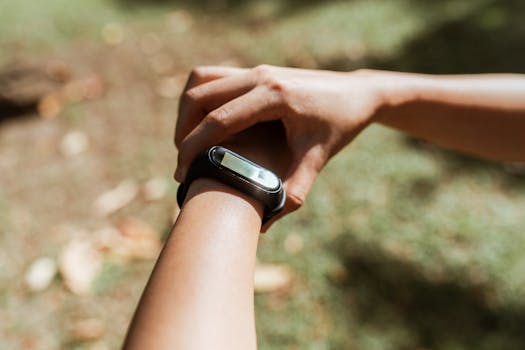
“
The Rise of Biometric Wearables: What 2026 Has in Store
Biometric wearables, with a focus on biometric wearables, have been gaining popularity over the past few years, and it’s easy to see why. These devices have the potential to revolutionize the way we live and interact with our bodies, from monitoring our health and fitness to tracking our daily activities and providing valuable insights into our well-being.
What are Biometric Wearables?

Biometric wearables are devices that use biometric sensors to track and monitor various physiological parameters, such as heart rate, blood pressure, and body temperature. These devices can be worn on the wrist, clipped to clothing, or even implanted under the skin. They use advanced algorithms and machine learning techniques to analyze the data collected and provide users with personalized feedback and recommendations.
Types of Biometric Wearables

There are several types of biometric wearables available, each with its own unique features and functions. Some of the most popular types include:
- Smartwatches: These devices can track heart rate, steps taken, and other fitness metrics, as well as receive notifications and control music playback.
- Fitness trackers: These devices are designed specifically for tracking fitness and exercise, and can monitor parameters such as distance traveled, calories burned, and sleep quality.
- Health monitors: These devices are designed for monitoring health parameters such as blood pressure, blood glucose, and body temperature.
- Smart clothing: This type of wearable technology integrates biometric sensors directly into clothing, allowing for seamless and continuous monitoring of physiological parameters.
What to Expect in 2026

As we look to 2026, we can expect to see significant advancements in biometric wearables. Some of the trends and developments to watch out for include:
- Increased accuracy and reliability: Advances in sensor technology and machine learning algorithms will lead to more accurate and reliable biometric data.
- Greater integration with healthcare systems: Biometric wearables will become more integrated with healthcare systems, allowing for seamless sharing of data and improved patient outcomes.
- More focus on mental health: Biometric wearables will begin to focus more on mental health, with features such as stress tracking and mood monitoring. For more on this, check out Wearable Tech and Mental Health.
- Increased adoption in enterprise settings: Biometric wearables will become more common in enterprise settings, with companies using them to monitor employee health and wellness.
Conclusion

In conclusion, biometric wearables are poised to revolutionize the way we live and interact with our bodies. With advancements in sensor technology, machine learning, and integration with healthcare systems, these devices will become increasingly accurate, reliable, and useful. As we look to 2026, we can expect to see significant developments in this field, from increased focus on mental health to greater adoption in enterprise settings.


